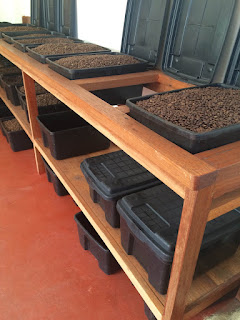While living abroad, I've missed a lot of pieces of home. Some of them, like friends and family, I simply won't be able to be around until I return; however, others, such as hobbies and passions, tend to follow their possessor. As a guitar player, for example, I was overjoyed to encounter a guitar whose owner has kindly lent it to me until I depart in December.
"Sahani" means "plate" in Swahili, like the kind you eat off of. This may seem like a rather abrupt transition, but the plate is relevant here because it's one of the better ways to translate disc, the gamepiece of ultimate frisbee. So, to "play frisbee" can become "kucheza sahani." Ultimate is another part of campus I miss, so I was sure to search for a group playing even before I arrived in Arusha. I wasn't sure what I'd find, but it turns out there's a group of people scattered around Arusha who love to play frisbee. It took some nudging to get everyone to meet again on a regular basis, mostly because there was an issue with field space. But not long after I arrived, I was playing my favorite sport with a group of new friends.
Every Saturday we meet to toss together, warm up, and scrimmage. I really look forward to this part of the week, because it's the only time I'll get to play ultimate with a bunch of other people. I can throw with a friend or two during the week, but full game play always awaits on the weekend.
This coming weekend is particularly exciting. On Sunday, Arusha Ultimate Frisbee is traveling about two hours to Moshi to have a friendly match with the players there. I'm excited about this event, because it's a big step for the development of my favorite sport in northern Tanzania. The Arusha players can learn a lot from Moshi, and this game can be the beginning of a series of town scrimmages to come. I'll be sure to post about this next week!
The last thing I'll say about sahani is that it's so cool to watch it grow in East Africa. When I traveled to Uganda, I met many members of this East African ultimate community who will continue to organize events and start new teams. On the bus to Uganda, I met a husband and wife who run a school in Morombo, an area in the south of Arusha. They asked why I was traveling, and my answer involved an explanation of this great sport called "sahani." The couple was captivated and asked me to come play with the children at their school on one of their sports days every weekend. My Tanzanian friend and I recently began going to the school on Saturdays and teaching the kids to play. This weekend will be just our second trip, but I'm excited that we can introduce a fun and spirited sport to Arusha youth.
Being abroad, I've been able to bring my favorite parts of Boston--especially ultimate--back into my life. Now I have a good amount on my sahani!































